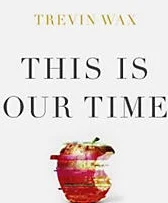Alive in Him - A Review
Ephesians is, perhaps, my favorite book of the New Testament. I’ve probably read it more often than any of Paul’s letters and I’ve tried to memorize it more than once. Ephesians is something like a brief summary of Christianity. It’s got the gospel, it’s got the central doctrines of Christianity, it has a lot of ethics spilled out in application of the theology it proclaims.
Alive in Him is a companion volume to Paul’s letter to the Ephesians. It is a tool that can enhance someone’s personal study of the important epistle. It functions well as an individual study, but would serve as a good guide to an individual study to the book of Ephesians.
This is not a verse by verse commentary, but Gloria Furman walks through the text in discernible chunks and in order. After her introduction, where she deals with some of the basic questions of provenance and relation to other books of the Bible, the book is divided into eight chapters.
Chapter One focuses on Ephesians 1:1-14. Here Furman digs into the gospel, which is the powerful theme of Paul’s entire letter. The second chapter outlines Paul’s prayer and God’s power evidenced through Christ. Chapter Three covers all of Ephesians 2, exploring our status as redeemed people, called to life and unity in Christ Jesus. Furman’s fourth chapter surveys Ephesians 3, where Paul lays out the difficult truth that the gospel is for all people regardless of nationality or background.
In Chapter Five, Furman follows Paul’s turn from doctrine to its application in ethics. She dives into Paul’s call for his readers to live in unity as one body of Christ. The sixth chapter closes out Ephesians 4 and hits the first half of Ephesians 5 with an inspiring call to be the new creation God made Christians to be. Furman deals with the so-called household codes in Chapter Seven. In the eighth chapter the reader is treated to Furman’s lively discussion of the armor of God.
This book is a prize for the church. Furman combines biblical consistency with fervent faith and engaging prose to draw the readers along and through a key text in the church. If you read this book without being interested, then the problem is not with the book.
Perhaps the chief strength of Alive in Him is that it points the reader beyond itself and to Scripture. In her introduction, Furman specifically calls her readers not to replace God’s word with her book. This is a volume that is designed to enhance a Christian’s study of Scripture, not distract from it.
Furman does an outstanding job at finding textual relationships between Ephesians and the rest of the canon. Her study of Ephesians is a small part of a larger biblical theology. This book points to the metanarrative of Scripture through Paul’s brief epistle.
The most enjoyable aspect of this book is that Furman so clearly delights in the text of Scripture and the God who is revealed by it. The secret to some of the most powerful teaching and writing is not someone’s grasp of original languages or their mastery of minutia, but the degree of interest of the teacher. Furman’s joy lights up this volume. It is refreshing and exciting for the reader.
Perhaps the greatest tragedy that could befall this book is that it be consigned to a ladies’ Bible study. If I ever preach through Ephesians I will reference this book. This deserves to be read and widely. It deserves to be on the shelves of pastors, deacons, and professors. This is an example of how to do Bible study well and how to love Christ more through doing rigorous study. May the church be blessed by this volume for years to come.
NOTE: I received a gratis copy of this volume with no expectation of a positive review.
























